Underground Catacombs Of Alexandria: Ancient Time Capsule Which Remained Hidden For Almost Two Millennia
A. Sutherland - AncientPages.com - The catacombs of Alexandria - one of the best-preserved Alexandrian complexes are the largest burial site dating back to the Greco-Roman period in Egypt.
Entrance of the principal tomb chamber. Credit: Clemens Schmillen - CC BY-SA 4.0
They are situated in the vicinity of Pompey's Pillar, a Roman triumphal column, and represent the largest of its type of construction that can be found outside of Rome and Constantinople.
The catacombs (Kom El Shuqafa, which means hill of treasures) were discovered accidentally at the beginning of the 20th century when one day, a donkey-drawn cart fell into a pit, which led to this crucial historical discovery.
The old place, dating back to the 2nd century AD, is fascinating because its architecture and decorative art have been influenced by Roman, Hellenistic, Pharaonic, and ancient Egyptian art.
The underground structure is like a time capsule, which remained hidden and undisturbed for almost two millennia.
Credit: Clemens Schmillen - CC BY-SA 4.0
The cemetery - underground tunnels dug inside the rock to a depth of 35 meters (115 feet) - consists of three levels, all located underground. Still, the lowest level of the catacombs suffered due to the flooding, which took place in the area, so it is now inaccessible.
Still, there are structures such as a spiral staircase of 99 steps, a shaft to lower the deceased's body using ropes, a dome, a banquette hall, and a vestibule with two shell-shaped niches. In one alcove to the east is a statue of a man, and to the west, there is a statue of a woman.
Decorated sarcophagus and panel with Apus-bull. Credit: Clemens Schmillen - CC BY-SA 4.0
Both statues were sculpted with the influence of Egyptian art, with some Greek features.
In the vestibule, there is an antechamber and a burial chamber with three recesses. In each of them, there is a coffin.
Other elements from mingling cultures are the winged sun disk, the Falcon God Horus, the Uraeus, or the cobra.
Central panel with Anubis mummifying a body. Credit: Clemens Schmillen - CC BY-SA 4.0
The cemetery consists of statues, human heads, Alexandrian tombs, and Pharaonic funeral cult archaeological objects strongly influenced by the Hellenistic and early Imperial Roman periods.
The catacombs were used for the last time in the 4th century AD.
Alexandria was initially established by Alexander the Great, the most famous Greek King and army leader, in 332 BC. It soon became the cultural and commercial center of the Mediterranean Sea region.
The Catacombs of Alexandria are the result of the mingling of the Greek and the Pharaonic cultures that lived side by side. At first, these were private tombs, which later became public burial places.
Written by – A. Sutherland - AncientPages.com Senior Staff Writer
Updated on February 12, 2023
Copyright © AncientPages.com All rights reserved. This material may not be published, broadcast, rewritten or redistributed in whole or part without the express written permission of AncientPages.com
Expand for referencesReferences:
Christensen w., Empire of Ancient Egypt
Johnson, P. The Civilization Of Ancient Egypt
More From Ancient Pages
-
 Unusual Stone Carvings And Medieval ‘Witching’ Marks To Ward Off Evil Spirits Discovered In England
Archaeology | Oct 29, 2020
Unusual Stone Carvings And Medieval ‘Witching’ Marks To Ward Off Evil Spirits Discovered In England
Archaeology | Oct 29, 2020 -
 Legendary Viking Sunstones Did Exist: Viking Sagas Were More Truthful Than We Realized
Featured Stories | Sep 15, 2023
Legendary Viking Sunstones Did Exist: Viking Sagas Were More Truthful Than We Realized
Featured Stories | Sep 15, 2023 -
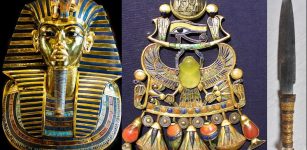 King Tut’s Cosmic Scarab Brooch And Dagger Linked To Meteorite’s Crash 28 Million Years Ago
Artifacts | Jun 17, 2021
King Tut’s Cosmic Scarab Brooch And Dagger Linked To Meteorite’s Crash 28 Million Years Ago
Artifacts | Jun 17, 2021 -
 William Marshal Earl Of Pembroke: Master Of Tournaments And Best Example Of Medieval Chivalry And Knighthood
Featured Stories | Jul 7, 2017
William Marshal Earl Of Pembroke: Master Of Tournaments And Best Example Of Medieval Chivalry And Knighthood
Featured Stories | Jul 7, 2017 -
 Explore The Giant Gjellestad Viking Ship Burial In This Stunning Virtual Tour
Featured Stories | Apr 6, 2020
Explore The Giant Gjellestad Viking Ship Burial In This Stunning Virtual Tour
Featured Stories | Apr 6, 2020 -
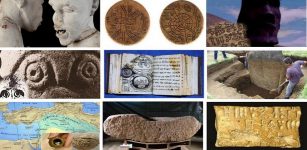 10 Mysterious Undeciphered Ancient Scripts, Tablets, Codes And Maps
Artifacts | Sep 16, 2014
10 Mysterious Undeciphered Ancient Scripts, Tablets, Codes And Maps
Artifacts | Sep 16, 2014 -
 Bertrand du Guesclin: ‘Eagle Of Brittany’ Brave, French Commander And His Clash With Sir Thomas Of Canterbury
Featured Stories | May 1, 2023
Bertrand du Guesclin: ‘Eagle Of Brittany’ Brave, French Commander And His Clash With Sir Thomas Of Canterbury
Featured Stories | May 1, 2023 -
 Riddle Of An Ancient Underground City No-One Thinks Exist – Symbol For A Spiritual Quest – Part 2
Ancient Mysteries | Sep 18, 2019
Riddle Of An Ancient Underground City No-One Thinks Exist – Symbol For A Spiritual Quest – Part 2
Ancient Mysteries | Sep 18, 2019 -
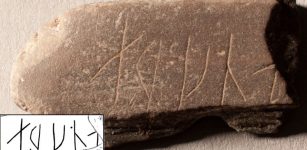 Puzzling Runic Inscription Dated To 1050-1500 AD Unearthed In Oslo, Norway
Archaeology | Dec 13, 2017
Puzzling Runic Inscription Dated To 1050-1500 AD Unearthed In Oslo, Norway
Archaeology | Dec 13, 2017 -
 Evidence For A Divergence Between Eastern And Western Mediterranean Indo-European Languages Finally Provided By Ancient Genomics Study
Archaeology | Jan 4, 2025
Evidence For A Divergence Between Eastern And Western Mediterranean Indo-European Languages Finally Provided By Ancient Genomics Study
Archaeology | Jan 4, 2025 -
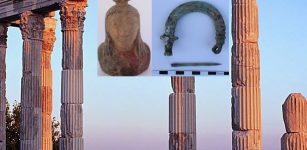 Excavations Reveal New Artifacts That Change History Of Ancient City Of Pergamon
Archaeology | Jul 4, 2020
Excavations Reveal New Artifacts That Change History Of Ancient City Of Pergamon
Archaeology | Jul 4, 2020 -
 Amazing Time Capsule – La Roche-Cotard Cave Sealed For 50,000-Years Offers Evidence Neanderthals Were The World’s First Artists
Archaeology | Nov 22, 2023
Amazing Time Capsule – La Roche-Cotard Cave Sealed For 50,000-Years Offers Evidence Neanderthals Were The World’s First Artists
Archaeology | Nov 22, 2023 -
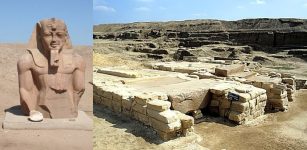 Pi-Ramesse: Pharaoh Ramesses II’s Great Capital Surprisingly Identified In Two Locations
Featured Stories | Jun 9, 2022
Pi-Ramesse: Pharaoh Ramesses II’s Great Capital Surprisingly Identified In Two Locations
Featured Stories | Jun 9, 2022 -
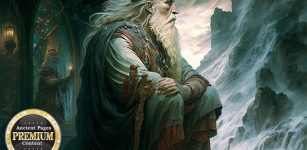 Norse God Hermod’s Meeting With The Finnish Magician Rostioff Who Revealed The Prophecy Of Vali
Myths & Legends | Feb 13, 2023
Norse God Hermod’s Meeting With The Finnish Magician Rostioff Who Revealed The Prophecy Of Vali
Myths & Legends | Feb 13, 2023 -
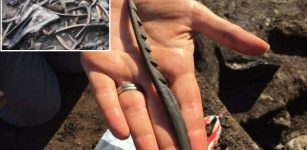 Archaeologists Shed Light On The Lives Of Stone Age Hunter-Gatherers In Britain
Archaeology | Jan 20, 2023
Archaeologists Shed Light On The Lives Of Stone Age Hunter-Gatherers In Britain
Archaeology | Jan 20, 2023 -
 Inscription On Rare Tetrarchic Boundary Stone Found At Biblical Site Of Abel Beth Maacah, Israel Has Been Deciphered
Archaeology | Jan 21, 2025
Inscription On Rare Tetrarchic Boundary Stone Found At Biblical Site Of Abel Beth Maacah, Israel Has Been Deciphered
Archaeology | Jan 21, 2025 -
 Intriguing 3,400-Year-Old Multipurpose Pyramid Found In Kazakhstan
Archaeology | Nov 2, 2023
Intriguing 3,400-Year-Old Multipurpose Pyramid Found In Kazakhstan
Archaeology | Nov 2, 2023 -
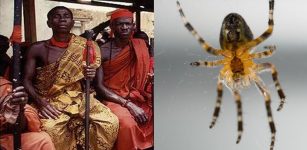 Anansi The Spider: Trickster And Spirit Of Knowledge In African Mythology
African Mythology | Jul 20, 2016
Anansi The Spider: Trickster And Spirit Of Knowledge In African Mythology
African Mythology | Jul 20, 2016 -
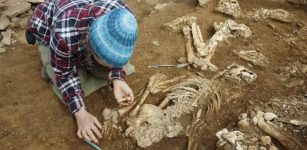 Riddle Of Orkney’s Lost Tomb – Fascinating Neolithic Discovery
Featured Stories | Nov 15, 2023
Riddle Of Orkney’s Lost Tomb – Fascinating Neolithic Discovery
Featured Stories | Nov 15, 2023 -
 Unexpected Archeogenetic Study Results Obtained In Graves Of Mödling And Leobersdorf, Lower Austria
DNA | Jan 16, 2025
Unexpected Archeogenetic Study Results Obtained In Graves Of Mödling And Leobersdorf, Lower Austria
DNA | Jan 16, 2025




